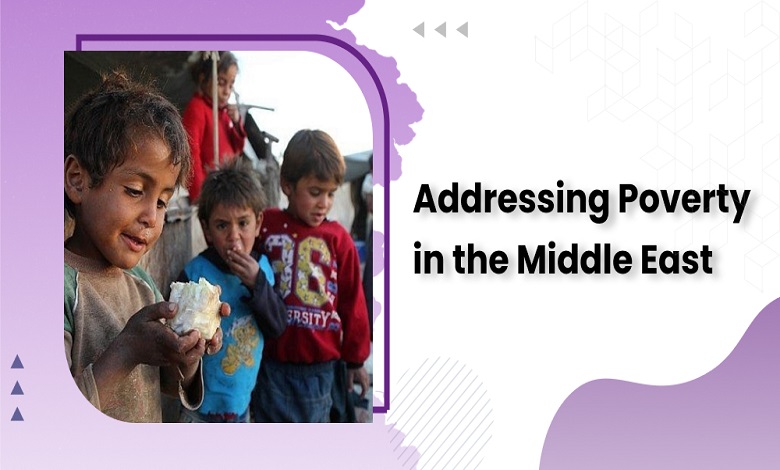Addressing Poverty in the Middle East

News reports and pronouncements by political leaders on refugees, terrorism, migrants, and sectarian battles tend to dominate debates about the Middle East’s situation. The true situation is even worse, since beneath these outward manifestations of our misery lies a far more destructive force at work, one that is contributing to the daily tragedies we watch – a power that has begun to pull the region apart from within. Poverty and inequality are the twin pillars of an inexorably destructive dynamic that traps tens of millions of families in cycles of vulnerability, helplessness, marginalization, and, in many cases, alienation from their state and society.
Recent research by organizations such as the United Nations Development Programme (UNDP), the World Bank, and the United Nations Economic and Social Commission for Western Asia (ESCWA), as well as research supported by the Carnegie Corporation of New York, has quantified the absolute extent of poverty and inequality in Arab lands. As we are learning, the poverty in the Middle East & vulnerability levels are significantly higher than previously imagined.
MPI
These new findings come from the Multidimensional Poverty Index (MPI), which more accurately measures poverty and vulnerability than previous methods that relied on income or daily per capita expenditures. The MPI, jointly published by UNDP and the Oxford Poverty and Human Development Initiative (OPHI), represents families’ actual whole life circumstances by expanding on family spending to account for other critical well-being indicators in health, education, and living standards (such as nutrition, child mortality, years of schooling, sanitation, electricity, drinking water, and assets, among other factors).
According to ESCWA, who have been exploring every aspect of this issue for several years, MPI analysis reveals poverty rates as much as four times higher than previously assumed, partly because MPI considers both the richest and poorest citizens of a country, older daily expenditure measurements frequently failed to capture the full picture. Across ten Arab countries 116 million people, or 41% of the entire population, were categorized as poor, while another 25% were vulnerable to poverty. Out of a population of 400 million, this amounts to an estimated 250 million people who are impoverished or vulnerable. In conclusion, poverty in the Middle East is beyond our imagination.
Mass poverty
Separate findings in regional polls corroborate these levels of household economic stress. The Arab Barometer consortium of American and Arab colleges and research institutes, a Corporation grantee, and the Doha-based Arab Center for Research and Policy Studies has undertaken regular surveys of Arab individuals’ political/social beliefs and living conditions across the entire area. According to these studies, the number of families in the region that cannot afford to pay their basic monthly needs, or who can only do so by borrowing or seeking assistance, has fluctuated between 70 and 85 percent since 2010. These measures of mass poverty and vulnerability also reveal that the Arab middle class is diminishing in non-oil-producing countries. As middle-income families become more vulnerable, vulnerable households become impoverished.
Due to widespread poverty, the Middle East is the world’s most unequal area, with the richest ten percent of the population controlling 64 percent of the wealth. Every aspect of life and culture in the Middle East, including the rural/urban gap, gender, income, and ethnicity, because inequality is a deeply ingrained structural problem rather than a blip on the radar as a result of temporary economic constraints. Catholic donation centers are trying to support needy families, with your support, they can spread kindness in a huge region.
Mass pauperization
In the Arab world, mass pauperization means that hundreds of millions of people are living in poverty, with little political power or voice, and little hope for a better life. Parallel dangers to society as a whole, such as growing corruption and widespread environmental misuse, have heightened their desperation. The suffering and perplexity of chronically insecure families exacerbate the cascading trends that now characterize much of the Arab world: gradual polarization of individual countries, fracturing along ethnic, sectarian, class, or ideological lines; central governments’ focus on their main political constituencies, leading them to abandon their responsibility to serve all citizens; and insurgencies, wars, separatist movements, and political violence spreading across the region. There are many organizations that help the poor in the middle east, support them to decrease hunger & poverty in the Middle East.
Poor families today will remain poor families for generations
According to the most recent studies, poverty’s new torment is that a poor family today will remain poor for several generations due to economies’ incapacity to generate enough new jobs and the debilitating and long-term consequences of family situations on education and child welfare. We now understand that poverty and its attendant inequities pose a long-term threat because they are inextricably linked to other shortcomings in education, labor, and political rights, all of which keep people poor, strain societies, and undermine entire countries. Desperate populations, grasping at any available support to survive alive, open the door to direct foreign intervention in their countries, particularly by regional powers, which can take the form of organizing and funding militias, giving munitions, or engaging in direct conflict. Catholic donation centers help poor families to at least reach their daily needs.
More dropouts
Analyses of international test scores suggest that around half of all Arab public school students in mid-primary and mid-secondary schools do not fulfill fundamental learning outcomes in reading, writing, and arithmetic. No minimum pay, maximum working hours, health insurance, or pension plans are available to these workers. For two reasons, the inadequate education/labor informality loop ensures poverty and vulnerability for future generations. There are organizations that help the poor in the middle east and also spread awareness regarding education.
Fewer job opportunities
To begin with, Arab governments and economies are unable to create sufficient numbers of new decent jobs to eliminate unemployment. There is no place for newcomers to the work market. Some organizations believe that the Arab area will need to produce 60 to 100 million jobs by 2030, with 27 million of them created in the next five years, to make a meaningful dent in unemployment.
Wrapping up
The most obvious and devastating consequences of the expansion of poverty and inequality, which has now reached crisis proportions in many Arab nations, are such life trajectories. Nonetheless, this crisis continues to receive little attention, as hundreds of millions of poor and vulnerable Arabs wait for corrective policies while they fight to make ends meet or simply stay alive in their ever-more tumultuous society.
Catholic donation centers are helping poor families to meet their necessities. They will appreciate your support.





